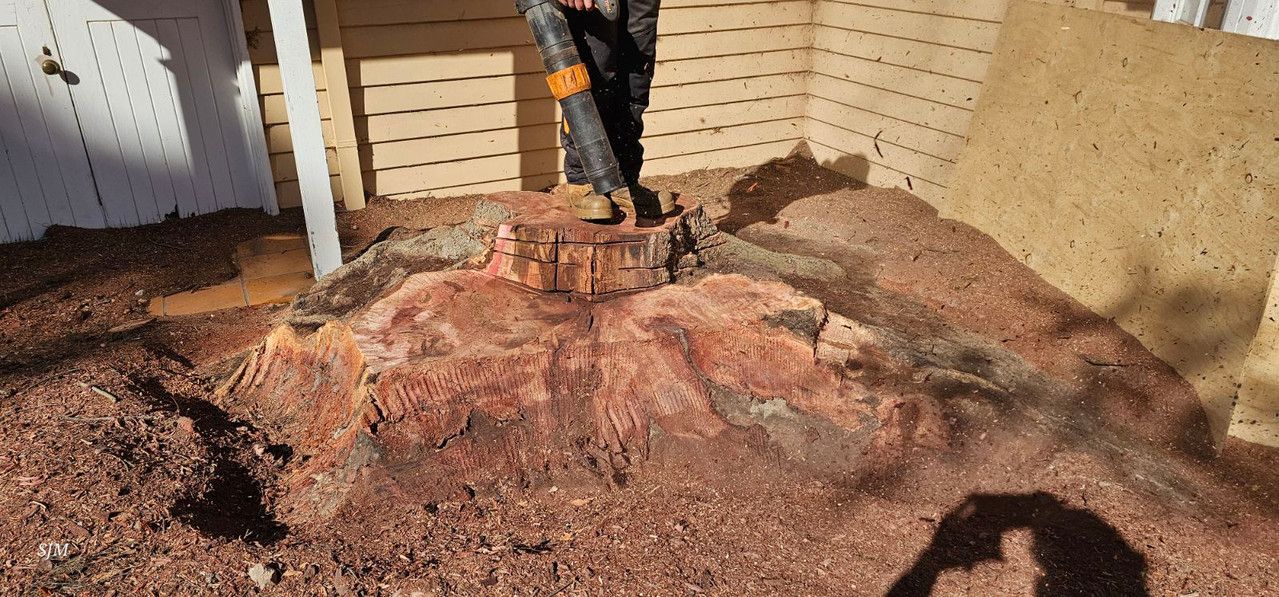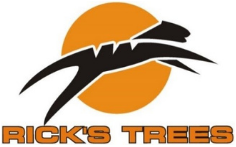Tree Talk
Discover our Blog.
Learn more about tree care, finding the right services for you and more!

Trees are vital to any property, offering natural beauty, shade, and environmental benefits. However, when a tree becomes hazardous, it can threaten safety and property. If you’ve ever witnessed a tree fall in your garden or neighbourhood, you’ll understand how crucial immediate action is to prevent further damage . Similarly, identifying the warning signs early can save you from potential storm damage or unexpected accidents. In Canberra and surrounding areas, where seasonal weather can bring high winds and heavy rains, proactive tree care is essential. This guide will help you recognise tree hazards, decide when removal is necessary, and understand the importance of hiring professional arborists to handle the job safely.

As an arborist with years of experience managing trees and landscapes, one of the most common questions I encounter after a tree removal is: What should I do with the stump? The two primary options are stump grinding and stump removal – each with its unique benefits and drawbacks. Understanding the difference can help you make the best decision for your yard or property. In this post, I'll walk you through the key factors to consider when deciding between stump grinding and full stump removal. By the end, you'll have a clearer picture of which option aligns best with your needs. What is Stump Grinding? Stump grinding involves using a specialised machine to grind the tree stump down to just below the surface of the soil. The stump is broken up into small wood chips that can either be used as mulch or disposed of. How it works: A stump grinder’s rotating blade cuts into the wood, reducing the stump to sawdust. Most grinders can grind the stump down to a depth of 6–12 inches, which is sufficient for covering with soil or grass. However, the roots remain intact underground. When stump grinding is ideal: You have a small or medium-sized stump. You’re looking for a quick, affordable solution. The stump doesn’t interfere with future landscaping plans (like building a structure over it). Advantages of stump grinding: Minimal disruption: Grinding is a non-invasive method that causes minimal damage to the surrounding landscape. Affordable: Because it's less labour-intensive than removal, stump grinding is often the more budget-friendly option. Eco-friendly: The wood chips generated can be used as mulch for other areas of your garden. However, one potential drawback is that grinding does not remove the roots . While these roots will eventually decompose, there’s always a slight chance of regrowth from the remaining stump or roots, especially with certain tree species. What is Stump Removal? Stump removal, as the name suggests, involves completely excavating the tree stump, including its root system. This process is more involved than grinding and requires the use of heavy equipment to pull the stump and roots out of the ground. How it works: After the tree is cut down, the root system is either dug out manually (for smaller stumps) or pulled using machinery. This creates a large hole where the stump once was, which will need to be filled afterwards. When stump removal is ideal: You’re planning a major landscaping project, such as building a patio, deck, or pool, where a clear, stable surface is required. The stump is from a species prone to regrowth (such as certain hardwoods). The stump is in a high-traffic area where the root system could potentially cause issues, like cracks in foundations, sidewalks, or driveways. Advantages of stump removal: Complete removal of roots: There’s no chance of regrowth since both the stump and its roots are completely extracted. Prevents future landscaping problems: For large projects, removal ensures the area is free from obstructions like large roots that could hinder construction or cause damage. The major disadvantage of stump removal is its cost and the disruption to the landscape . Removing a stump , particularly a large one, leaves behind a significant hole that will need to be filled with soil or other materials. Additionally, the use of heavy machinery can disturb surrounding plant life. Cost Considerations Cost is often a decisive factor for many homeowners. On average, stump grinding is the more affordable option, typically ranging from $150 to $500 depending on the size of the stump. Stump removal , due to the complexity and labour involved, usually costs more— between $500 and $1,000 , depending on the size of the tree and the difficulty of removing its roots. It’s important to weigh these costs against the long-term benefits. For instance, if you plan to plant another tree or start a landscaping project in the same spot, stump removal may be worth the investment. Environmental Impact Both stump grinding and removal have their environmental pros and cons: Stump grinding leaves the root system intact, allowing it to decompose naturally. The wood chips produced can also be used as mulch to nourish other plants in your yard, making it a more eco-friendly option overall. Stump removal , while more disruptive, eliminates the possibility of regrowth and the associated challenges of tree root invasion in the future. However, the process is more labour-intensive and often requires the use of heavy equipment, which can damage nearby plants or soil. Which Option Should You Choose? As an arborist, my recommendation depends on the following factors: Budget: If cost is a concern and you simply want to get rid of an unsightly stump without disturbing the area too much, stump grinding is a more cost-effective solution. Environmental considerations: For those concerned about sustainability, stump grinding allows the organic material to decompose naturally, contributing to the health of your soil. Safety Considerations: As an arborist, safety is always a top priority. Both stump grinding and removal come with their own set of safety concerns: Stump grinding: The machinery used can be dangerous if not handled properly. Flying debris is a common hazard, making protective gear essential for operators and bystanders. Stump removal: The use of heavy equipment poses risks, particularly in residential areas. There's also the danger of destabilising surrounding soil or damaging underground utilities. Time Factor: The time required for each process can vary significantly: Stump grinding: Typically takes 30 minutes to 2 hours per stump, depending on size. Stump removal: This can take several hours to a full day, especially for larger stumps with extensive root systems. Impact on Soil Health and future plans for the area Both methods affect soil differently Stump grinding: This leaves organic matter in the soil, which can improve soil quality as it decomposes. However, it may temporarily deplete nitrogen as decomposition occurs. Stump removal: This creates a large hole that needs to be filled, potentially altering soil structure. It does provide an opportunity to amend the soil if needed. Both stump grinding and removal have their places depending on your specific needs. If you’re still uncertain about which method is best for you, I recommend consulting with a professional arborist who can assess the size, location, and condition of the stump to provide a personalised recommendation. At Rick's Trees, we offer both stump grinding and stump removal services. Our team of experienced arborists can help you decide which method is right for your property. Contact us today to schedule a consultation or learn more about our stump grinding services here .


